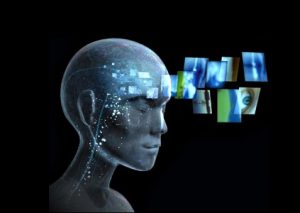
Let’s try to consider the COGNITION from another point of view – the point of view of the author of this article.
PERCEPTION (from Latin ‘perceptio’) is the simplest kind of cognition during which realizes ‘sensation’ of the World (in the broadest sense of this word). The discovery and differentiation processes take place in receptors of the body (flesh) and usually fall into perception. Theoretically, perception is the prerogative of any objects having a body (flesh).
RECEPTIVITY is more complicated kind of cognition during which one reflects earlier received perceptions (sensations) as objects, processes, phenomena. In a such way one formulates his own subjective understanding of the World. The identification and recognition (categorization) processes usually fall into receptivity. Theoretically, receptivity is the prerogative only of conscious objects.
MANIFESTATION is the most pervasive kind of cognition during which one organizes perceptions one has received earlier into interdependent strings. These strings help someone to “see” cause-and-effect relations of the earlier perceived processes and phenomena of ‘our’ Universe. The thinking (speculation, using one’s brain help someone to use systematized information in his/her activity) usually fall into manifestation. Theoretically, manifestation is the prerogative of conscious Beings and Entities (they use consciousness in their activity, i.e. information they have systematized during cognition).
Mental experiment №1. A fisherman at the pond.
The fishing rod with its line, buoy and hook can be considered as a peculiar device, “special equipment for the elongation of a fisherman hand” or “elongate arm prosthesis” with the help of which he can fish more successfully. This fisherman baited and tested the waters. Firstly, the fish (the observer in our case) senses a jig (perception), its brain reflected this jig on the hood as its favorite food (receptivity). But fish, as a rule, cannot think about what can be beyond this jig. It cannot realize that there is a fisherman, on whose rod this jig is fixed. Exactly this realization is a pervasive manifestation.
Mental experiment №2: A human being cognizes the World.
It is impossible to precisely identify a human being if basing only on his/her body parameters. A mere plastic operation and you will not recognize a human being you knew before. That’s why to solve this case a complex of BODY and PERSONALITY parameters are used, thanks to which every human being become an INDIVIDUUM. Individuum is the conventional name of a human being who possesses individuality, i.e. unique BODY and unique PERSONALITY.
When people assert that they know this “human” (to be more precise, a human being) it means that they identify this human being according to two interrelated components:
- They know how the BODY of a human being in which the ENTITY of a human being incarnated looks like;
- They know the PERSONALITY of this human being, which they associate with this body as a complex of his/her stable traits.
If only one of the mentioned above items will be changed, people will not recognize this human being (“human”).
It can happen if:
- the BODY is changed (plastic operation, body injury, etc.);
- the PERSONALITY of a human being is changed, by any reason the stable traits of the PERSONALITY change (a human being acquires new knowledge and aptitudes) or a human being have wasted his/her knowledge and aptitudes (which he/she had before).
Based on the mentioned above material, one can assert that people identify each other according to two interrelated components that are BODY and PERSONALITY of a human being.
But if the BODY is already formed during the birth, i.e. during child-bearing, then the moment when the PERSONALITY formation is unknown to many people.
The moment of the human being PERSONALITY formation is the moment of the “Self” (the ENTITY of a human being) incarnation into the BODY of a human being. This process is called CREATION (co-creation), because parents or partners participate in the creation of a human being. The completely different object under the conventional “SELF” or the ENTITY of a human being name deals with the creation of the PERSONALITY of a human being.
Here is the most interesting thing. People, as a rule, cannot “see” the ENTITY of a human being or their “Selves”, that’s why they resemble a fish the author described in the mentioned above mental experiment. But human beings differ from fishes by their ability to perform a pervasive king of cognition that is manifestation. With the help of thinking (speculation, using one’s brain) some PERSONALITIES of human beings recognize not only “themselves”, but also their place in the Universe…
© 2017, Helen Zhoglo, translation into English
